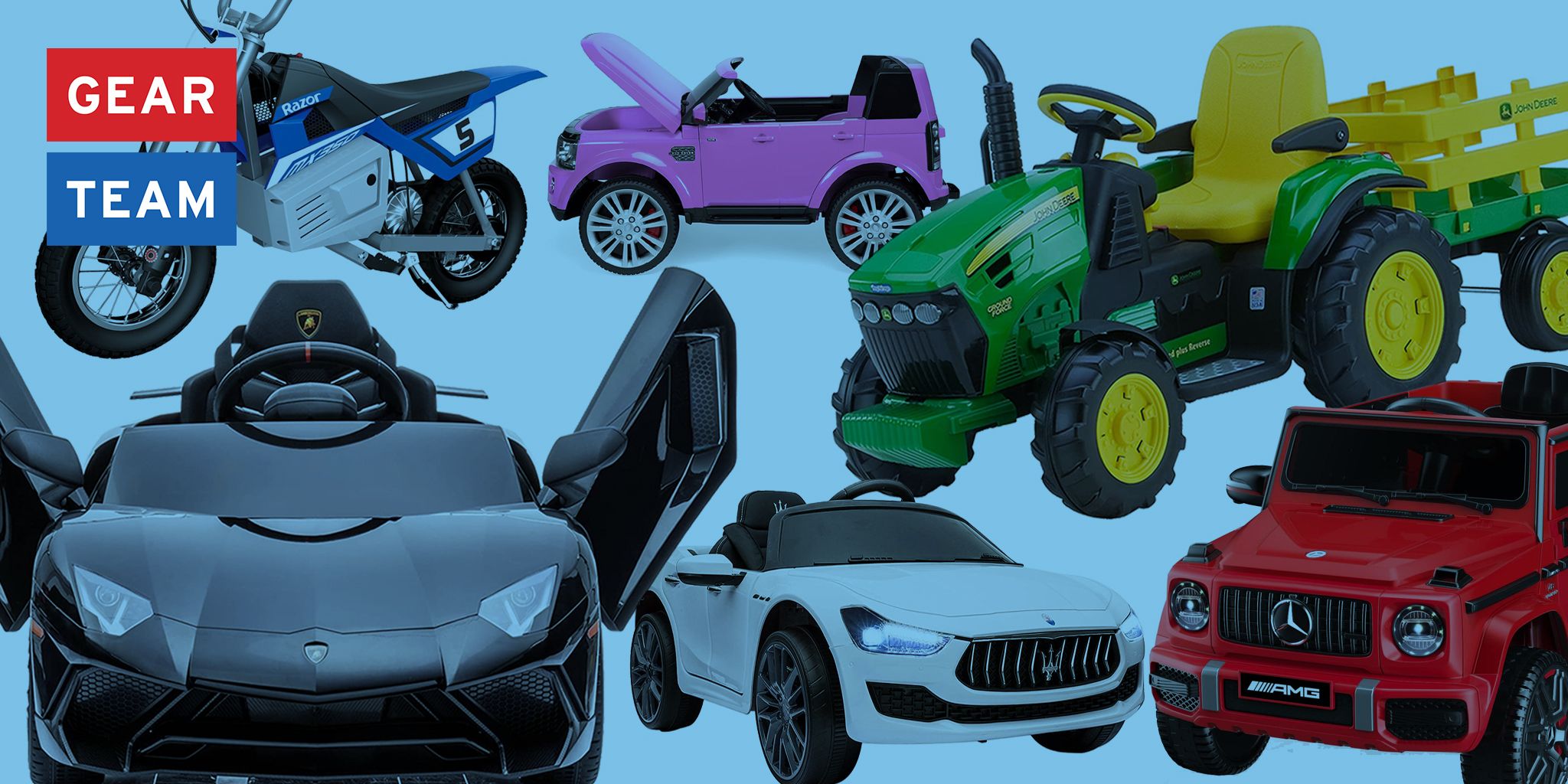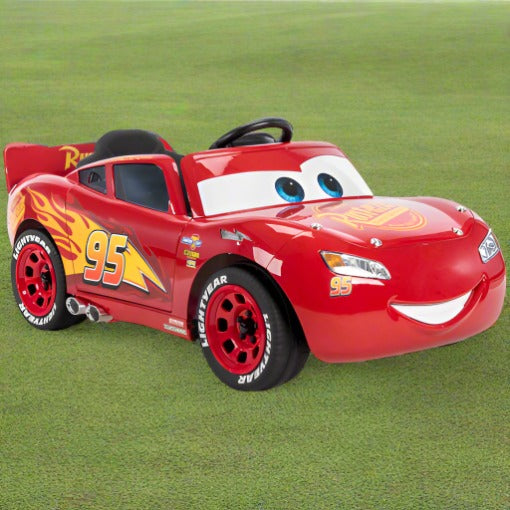Recommended Info On Selecting Ride On Toys
Wiki Article
What Should You Be Looking For When You Are Choosing A Ride-On Vehicle For Your Toddlers Or Older Children?
Consider the child's age, size and developmental stage when considering ride-on vehicles for kids. This is to make sure they're safe and enjoy themselves. Here are a few things to consider:
Younger toddlers (1-3 years old) - For younger toddlers consider ride-on cars that are specifically designed for their age. These vehicles have simple controls, a low design that is stable, and a steering wheel or button. Ride-on cars that have a wide base will provide stability and reduce the risk of them falling off.
Children older than 3 years As they get older, children are able to handle ride-ons with more advanced features and controls. Consider cars with adjustable seats, higher capacities for weight, and also interactive features such as working lights, music and sound. You should look for ride-ons that allow you to adjust the speed setting or parental controls in order to ensure safety and be able to accommodate different skill levels.
Size
Height and Weight – When selecting a ride on vehicle, consider the height of your child and their weight. Pick a car that has a seat that fits the child's weight and height. Avoid cars too big or too small. They may cause discomfort and even danger.
Comfort and Legroom: Ensure that your child sits comfortably and has sufficient legroom in the ride-on. The size of the seating area must be suitable for the height and size of your child.
Developmental Stage
Motor Skills: When choosing a ride-on vehicle, take into account your child's ability to coordinate and their motor skills. For toddlers, simpler controls could be necessary to steer. However, older children can use interactive features and more complicated controls.
Independence and Confidence The use of ride-on cars can to build confidence and independence in children, as they develop the ability to control and navigate their own vehicle. Select a ride-on model that allows your child to practice steering, accelerating and stopping without assistance, building confidence with time.
Pick a vehicle that is interesting and attractive to your child. Choose a car that is themed, is colored or features your child will love whether it's a classic car. a sportscar, a truck, a character from an animated series, etc.
You can select an ride-on vehicle that is safe, comfortable and educational for your child by considering their size, age and developmental stage. Check out the top rated ride on toys for site recommendations including toy toy cars, cars pedal car, digger ride, 2 seater electric cars, digger ride, ride of car, kiddies cars, electric ride on cars, two seater childrens electric cars, toy and car and more. .

What's The Difference Between Electric Ride-On Vehicles And Their Equivalents?
Electric ride-on cars often feature different speeds and control options to cater for different levels of experience and provide a safe and enjoyable riding experience for children. This is how and why they are used.
Different children have varying levels of proficiency and confidence in driving on-road vehicles. With multiple speed settings available parents can adjust the vehicle's maximum speed in accordance with the child's capabilities and decrease the risk of having an accident.
For young children or those who are just starting out smaller speeds are the best for the ride-on car. Higher speeds are suitable for older children or those with experience.
Gradual Learning Curve -
Electric ride-on cars with multiple speed settings provide an accelerated learning curve for kids as they learn their driving skills over time. Beginning at slower speeds allows beginners to familiarize their bodies with the controls and build confidence before they can move to higher speeds.
As your child gets better at driving, you are able to increase their speed. It gives them an impression that they are progressing and achieving.
Parental control
Certain electric cars have parental controls that allow parents to limit the maximum speed at which their child can travel. Parents will be able to have peace of mind by using this feature, since they can alter or intervene at any time to protect their child.
Models can include parental control options, such as remote speed limiters, or emergency stop buttons.
Flexibility
The interests and capabilities of children are able to change as they age and grow. Multi-speed electric ride-ons offer the flexibility to adapt and accommodate these changes in children as they grow.
As they increase their confidence and capability as they gain confidence and ability, children can be elevated to faster speeds, which can provide a more exciting and demanding experience. Parents can reduce the speed for younger children and friends.
Customization
The ability to customize and personalize the riding experience is possible with multiple speeds. Children can select a setting that is suitable for their level of comfort and the level of excitement they desire.
Some electric vehicles have additional features like variable braking and acceleration sensitivity. These features let you fine tune the sensitivity of driving to meet specific needs.
Overall, electric ride-on vehicles with a variety of speeds and control options offer the safety, flexibility and a personalised experience for children of different age groups, levels of skill, and preferences. These features help children develop confidence and skills, while also providing them with enjoyable and thrilling adventures. Parents can supervise and intervene as needed to protect their child. Follow the most popular click here for Mercedes kids car for website recommendations including race car toy car, kids electric cars, a toy car, toy car, toy cars, childs car toy, two seater electric cars, remote control childrens car, toy and car, toy the car and more. .

What Kind Of Children's Remote-Controlled Cars Are There? What Are The Benefits And Disadvantages?
Remote control cars for kids are also known as RC or remote-controlled vehicles are available in a range of sizes, styles and prices. They're designed to accommodate the needs of different budgets and tastes. This article will provide an overview of the different types, sizes and prices of remote-controlled cars for children, along with their pros and cons.
Electric RC Cars – Remote-controlled electric cars that are powered by batteries. They can be used indoors as well as outdoors. These cars come in a range of designs including trucks, buggies or sports cars.
Nitro RC Cars – Gas-powered remote-controlled cars that offer more power and performance, but more expertise and maintenance is required to operate. Electric RC cars are less bulky and cost less.
Scale Models are remote controlled replicas that include cars, trucks and airplanes. Scale models range from 1 -10 to 1-24, with the larger scales allowing for more details.
Sizes -
Remote-controlled children's cars are available in a variety of sizes, ranging from tiny miniature models to huge-scale replicas. The weight and size of the vehicle will impact its performance.
Micro-sized car are lightweight and compact. They're ideal for young children as well as indoor use. Larger-scale models are more durable and powerful making them ideal for off-road and outdoor racing.
Prices
Prices of remote-control children's vehicles vary according to factors like dimensions, features, and brands.
Micro-sized electric cars can be bought for between $20 and $100 bigger electric and nitro-powered RCs can be purchased for $100-$500 or more.
Models and top-of-the-line hobby RC cars range from a few hundred to more than a 1000 dollars, depending on the amount of detail.
The Pros and Cons of -
Pros -
Remote Control Children's Cars - These vehicles are fantastic for entertainment. They are able to be utilized by adults as well as children.
The operation of an R/C vehicle helps children develop spatial awareness, problem-solving skills and hand-eye cooperation.
Social interaction. You can take pleasure in RC vehicles with your friends and family, which promotes social interaction.
Customization - A lot of RC vehicles can be upgraded by adding accessories and upgrades, which can improve their performance and appearance.
Cons -
Cost - Remote control cars for kids, particularly those with high-end features and hobby-grade models can be quite expensive.
Learning Curve - Operating an RC vehicle requires practice and skill, and even younger children may struggle with the controls in the beginning.
Maintenance - Regular maintenance is required for RC vehicles, such as cleaning, lubrication, and repairs.
Safety concerns RC cars pose a safety danger, and could cause electrical hazards, collisions and falls if not used under supervision by an adult.
Overall, remote control children's vehicles provide a thrilling as well as educational experience for kids of all ages. However, it's important to think about factors such as size, price, features, and safety when selecting the best model for your child. Hobby-grade RC cars are appropriate for older children and avid users, whereas simpler models are best for young youngsters and those who are just beginning. Have a look at the top rated Audi ride on car kidscars.co.uk advice for site info including remote control childrens car, ride on digger, pedal car, cars pedal car, ride on car, pedal car, toy in car, remote control childrens car, childrens digger, childrens electric cars and more. .
